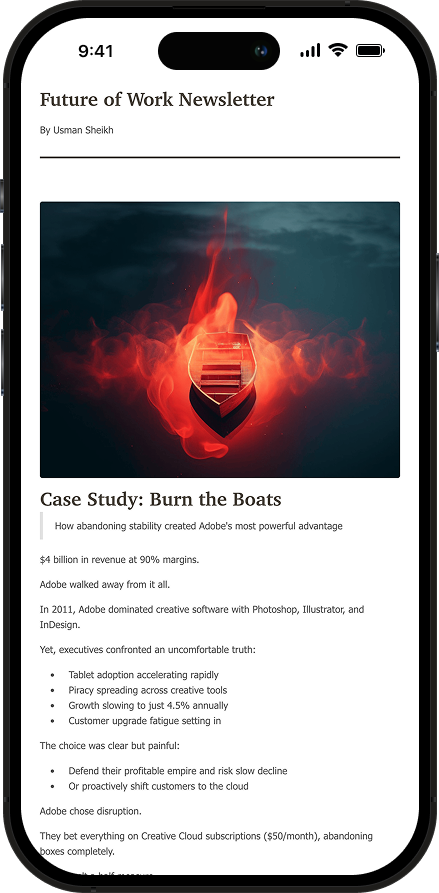29 Apr 2025
AI Breaks Education's Oldest Constraint
How Duolingo achieved record growth without adding headcount
Duolingo isn't teaching languages anymore.
It's ending education's oldest constraint.
Yesterday the CEO of Duolingo published a terse, two-page memo: "AI-first. Contractors out. New hires only when machines can't do the job." (link below)
The memo mirrors a similar one Shopify released last week with the same theme: cognitive bandwidth is now scalable and abundant.
Education institutions shared the same constraints:
→ More students required more teachers
→ Quality control limited scaling
→ Cultural nuance demanded human expertise
→ Content creation bottlenecked growth
With the use of the new technologies several of these constraints no longer apply.
The best teachers can have far more impact as shown by companies like Khan Academy.
If you want further evidence look Duolingo's results:
→ Revenue exploded from $70M to $748M in five years
→ First-ever $88.57M profit in 2024
→ 31M daily users reached
→ Expanded into Math, Music, Chess on same core stack
Three key shifts for education organizations:
→ Value shifts from teaching to orchestrating
→ Lesson creation compresses from weeks to minutes
→ Performance tied to automation, not utilization
An operating model for tech-first education companies:
→ Core: FTEs orchestrating AI operations
→ Ring 1: Teachers provide care and context
→ Ring 2: Fractional experts verifying cultural nuance
→ Ring 3: Community loops driving distribution
→ Result: Growth decouples from human headcount
But this transformation carries significant risks:
→ Trust erosion when AI inevitably hallucinates
→ Quality suffers when cultural context is lost
→ "Profit over people" perception damages brands
The question isn't whether to adopt AI tools.
It's whether organizations can rebuild around cognitive abundance while honoring human dignity.
The winners won't just cap headcount and maximize leverage.
They'll amplify human potential, redeploying savings into judgment, creativity, connection.
Algorithms create leverage; meaning remains a human monopoly.
